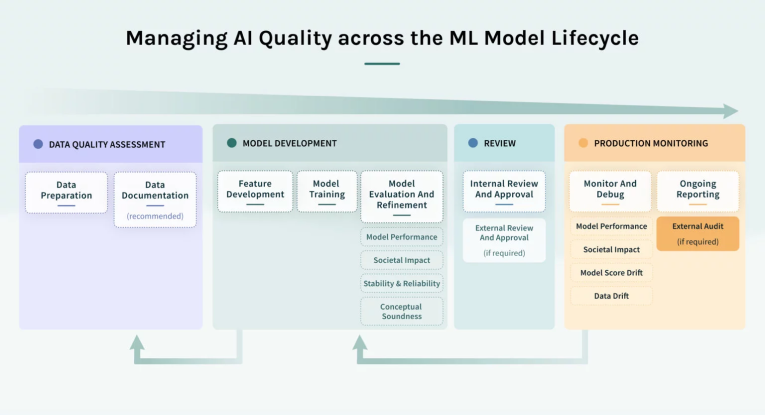Best Approaches for AI in Quality Management
AI is essential to the success of Quality Management and is transforming the way organizations approach testing and validation. It can help identify areas for improvement in the testing process, and thus increase the accuracy and speed of the process by reducing the time and effort spent on manual testing by automating repetitive tasks.
Incorporating AI into Quality Management is becoming increasingly important as organizations strive to become more agile and competitive. AI can help reduce the cost, time, and complexity associated with managing quality assurance (QA) processes, and can be used to automate manual processes, detect defects faster, and analyze large amounts of data in order to identify trends and patterns. By leveraging AI, organizations can significantly improve the efficiency, accuracy, and effectiveness of their Quality Management processes.
How is AI applied in quality management?

AI is being applied to quality management in a variety of ways.
AI-driven automation can also be used to monitor processes and identify any potential issues, instantly flagging up any irregularities and allowing for swift corrective action. It can also be used to interpret vast amounts of data and provide insights into process improvement opportunities, helping to ensure that processes are as efficient and effective as possible.
AI-driven sentiment analysis can be used to detect customer sentiment and extract key insights, allowing companies to identify areas for improvement and take action to ensure that customer needs are being met. AI can also be used to automate customer service processes such as customer query resolution, helping to reduce response times and improve customer satisfaction.
AI can also be used for predictive analytics, allowing companies to anticipate potential issues that may arise in the future. AI-driven analytics can be used to detect patterns in data and identify areas where quality may be slipping, allowing companies to take proactive steps to prevent problems from occurring. By using AI-driven anomaly detection algorithms, companies can identify any potential issues before they become an issue, allowing them to take corrective action as soon as possible.
Stages Of AI Quality Control For Improvised Quality Engineering
The process of AI quality control involves multiple stages, from requirements and definition to maintenance and updates. Each stage helps ensure that the AI-based product or service meets the desired quality standards. By incorporating AI quality control into the automated quality engineering process, organizations can ensure that their AI-based products and services meet the desired quality standards and perform as expected.
1. Requirements & Definition Stage
The first stage of AI quality control involves defining the requirements for the AI-based product or service. This includes determining the purpose, scope, and objectives of the product or service and also involves identifying the input and output requirements, as well as any other relevant factors that may influence the design and development of the product or service. This stage helps ensure that the AI-based product or service meets the desired quality standards.
2. Design & Modeling Stage
During this stage, the AI-based product or service is designed and modeled based on the requirements and objectives identified during the first stage. This involves creating the algorithms, models, and other components of the AI-based product or service, which helps ensure that the AI-based product or service meets the desired quality standards.
3. Training & Validation Stage
During this stage, the AI-based product or service is tested and validated to ensure that it meets the desired quality standards. This involves simulating different scenarios and evaluating the results and helps ensure that the AI-based product or service performs as expected and meets the desired quality standards.
4. Testing & Deployment Stage
In this stage, the AI-based product or service is tested to ensure that it performs as expected and meets the desired quality standards. This includes running unit tests, integration tests, and other tests to ensure that the AI-based product or service meets the desired quality standards.
5. Maintenance & Updates Stage
In this stage, any changes or updates to the AI-based product or service are tested and validated to ensure that they meet the desired quality standards. This includes running unit tests and other tests to ensure that the AI-based product or service meets the desired quality standards.
Takeaway - Addressing the AI Quality Problem
The AI quality problem is a complex and multifaceted challenge that will require continued research, collaboration, and innovation in order to address it effectively. AI systems need to be designed, built, and tested with high-quality standards to ensure that they make decisions that are fair, accurate, and efficient.
A comprehensive & holistic approach is needed to ensure that AI systems are safe, reliable, and beneficial to society. To do this, we must ensure that AI developers have access to the resources and support they need to build AI systems that are reliable, secure, and compliant.





